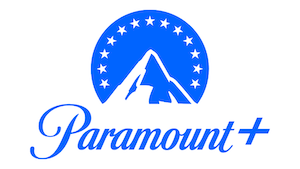Rage 2 feels like a lot like a trip to an amusement park. You’ll spend a lot of time just walking from place to place, not really enjoying yourself, wondering if this trip was even a good idea as you ignore distractions on all sides until you reach the ride you want to go on next. Then it’s full-speed excitement, all light and sound and adrenaline, and you never want it to end — for about five minutes. Then back out into the dead space between attractions, the fake castles and set dressing, walls plastered with signs telling you that this is a fun place to be, but not doing a very convincing job of it.
Rage 2 even starts somewhat like a roller coaster. You’re strapped in and waiting for the ride to start. You choose whether your character, Walker, is male or female, a mostly pointless choice because they don’t have a single defining personality trait either way. You meet your adoptive sister, Lily, as your home town is under attack by a group of super-powered mutants called the Authority. You don a suit of Ranger armor, not really knowing what that signifies, and make your way through the sequence, slowly picking off enemies with your handgun. The roller coaster car slowly clicks up the hill. It’s not very interesting, but you know it’s all just setup for what comes next. Your adoptive mother is killed and a bizarrely prescient hologram recording fills you in on Project Dagger, a secret plan to stop the Authority once and for all. After the attack, which is maybe 10 minutes at most but still feels too long, you’re let loose into the world to pursue Project Dagger. The car speeds down the hill, and it’s thrilling for the next few minutes, until the ride ends and you get back in line.
In the moments when Rage 2 is really on, it’s fantastic. You have access to a suite of powers from the ground-pounding Slam to the store-brand Force push Shatter, plus an arsenal of weapons both conventional and pure id Studios sci-fi, with which to wreak havoc across the already sufficiently havoc-filled wasteland.

You could spend the whole game using nothing but the assault rifle and shotgun that you get early on, and there were long segments when I did just that. They’re probably the most efficient, and definitely the most reliable, weapons that you get in the game. They don’t just get the job done; they feel great to use. The shotgun’s blasts are super concussive, tearing through enemies and environmental clutter alike in a way that you can almost feel in your chest. The assault rifle feels like a fire hose, nearly leaping out of your hands as it pushes and rends whatever you aim it at. But relying on them is depriving yourself of a lot of the fun in Rage 2.
Most of the weapons in the game seem to be designed not to be the most effective, but to be the most spectacular. Why spend time filling enemies with gravity-negating darts and flinging them into each other or peppering them with explosive pellets then setting them ablaze when you could just kill them in half the time? Because it’s fun. Why use an ability to launch yourself into the air, then use another ability to come crashing down on your enemies like a meteorite when a grenade would be just as effective? Try it once and you’ll see. You could choose to limit yourself to a random couple of weapons and powers for each fight and never run out of creative ways to turn your enemies into geysers of blood. It seems like the game’s designers were just handed the keys and told to see how big of a crater they could make with Rage 2’s weapons and powers, and they turned it into one of the most satisfying moment-to-moment games in years. Unfortunately, those moments don’t last long.
When you leave Vineland, your now-destroyed hometown, you’re told to meet three characters and help them fulfill their part of Project Dagger. You can visit them in any order, but you’re told to seek out John Marshall in Gunbarrel first. So I went to him and took my time completing the couple of short missions that he assigned me, while spending much more time cruising through the wasteland picking fights, clearing out bandit dens, searching for digital dog tags from dead Rangers, and looting pre-apocalypse vaults called Arks, which hold powerful technology that you can use. And I had a blast. The sheer fun of Rage 2’s combat was enough to carry me through the first dozen hours in a haze of adolescent joy, even as it became more and more clear that there were only a handful of activities that I’d be completing over and over again.

Aside from the activities you find in the open world, each Project Dagger character also has story missions for you to complete. These are easily the most exciting parts of the game; they have at least some narrative stakes, even if the story isn’t that interesting, and these missions keep up the pressure for long encounters that give you the best chances to gain some momentum and use your arsenal to its fullest extent.
Between these missions and activities, though, you’ll face long periods of simply moving from place to place, scrounging up resources, talking to traders, and driving to your next destination. There’s just so much downtime in Rage 2 that it’s hard to feel like you’re moving forward at all. And when it comes to actually moving around in the vehicles you’ll drive around the world, I was disappointed. Driving was easily the weakest part of the preview build I played a few months ago, and while it’s gotten measurably better since then, it’s still nowhere near the quality of combat. Vehicles all feel a bit stiff, get knocked off course a bit too easily, and just lack the tactile pleasure of the game’s combat. You can pick up a variety of vehicles in the wasteland, but the armored car you start with is the best of the bunch.
As I played, I gained currency to purchase upgrades from Marshall’s tree under the “Projects” tab in the menu. Each of the three Project Dagger participants has their own tree, which grant you different types of upgrades. One for combat, one for crafting and vehicles, one for mostly utilities like resource tracking. In previews, we were told that you would have to complete different tasks for each character to unlock later tiers in their upgrade tree. That’s no longer the case, even though there’s still text in the game saying that it is. Now, the individual characters’ Project levels are mostly vestigial. You need to reach level five to unlock a mission for each one, but that’s the only effect they have. Instead, you just purchase two upgrades from tier one to access tier two and so on. It’s probably a change for the better, since the old system would have made the game even more of a grind-fest, but it makes the game’s side activities feel even more pointless with it gone.

When I finished John Marshall’s questline, which probably would have taken just a couple of hours if I had just done it straight through, I had enough upgrade points to purchase everything that I needed from the second character’s tree as soon as I met her and unlocked it. This character, Loosum Hagar, then directed me through an equally short series of missions, which I again took my time with so that I could keep gathering the roughly dozen different upgrade currencies in the game and explore the landscape.
By the time I met Dr. Kvasir, the third main character, things had changed. I had most of the game’s main abilities and weapons and I didn’t like the area he was in nearly as much as the others, so I just powered through his questline, expecting to open up a new set of objectives now that Project Dagger was off the ground. Instead, I was told that it was time for the final confrontation. So I drove to the big bad’s compound in a tank and killed him in a bland boss fight, then the credits rolled. Even for a game that was starting to wear out its welcome, the conclusion was unexpectedly and disappointingly sudden. It felt like I was finally gearing up to start the high-powered end game, not to just draw things to a lackluster conclusion. Still, I had a few more Arks to complete, so I jumped back into the game and finished them, excited to finally be playing with a full deck, but the moment I’d done so, the spell was broken. I was fully equipped now — to do what? My map was full of icons, but all that was left to do was the exact same set of activities I’d been doing for the last 20 or so hours.
It turns out to answer to “what do I do now?” is wait for the game’s post-launch content to start rolling out. Rage 2’s roadmap is thick with weekly challenges, free updates, and DLC. It’s not exactly unprecedented, but for an entirely single-player game that mainly comprises a series of shooting galleries with different wallpaper, it seems like an odd move to rely so heavily on people wanting to come back for a weekly trickle of new content. I also can’t help but ask the question, would Rage 2 be a better game if it had released later, with more of this planned content at launch?

Lack of variety is one of Rage 2’s biggest flaws; the other is lack of personality. It might as well be a universal law that the harder a piece of media tries to convince you that it’s punk, the less punk it actually is. Rage 2’s marketing was all neon and mohawks and Andew WK playing to bewildered crowds at E3. The trailers were full of upbeat music, quick-cut action shots, and people saying “ass” a lot so you know this isn’t your grandpa’s open-world shooter. As irritating as all that corporate edginess may have been, it still had loads more personality than the actual game. Rage 2’s opening battle is so dour and drab that I was waiting for it to drop the act and turn into a straight parody. As I arrived in Gunbarrel and got my first quest from John Marshall, a stone-faced war hero looking out for the people of his town, I realized that that wasn’t happening.
There are hints in item descriptions and snippets of dialogue that some faction of Rage 2’s writers also thought they were working on something with a sense of humor, while others were writing as if they’d be fired if the player so much as cracked a smile. Every beat of the story is flat, and even the action lacks the vibrancy and abandon that we were sold on. Rage 2 may have expanded its color palette from the murk of the original game, but its tone is still pure gray. Worse yet, it continues and expands on the original game’s use of physical deformity as a signifier that a character is evil or otherwise unworthy of respect. It’s a common trope in post-apocalyptic fiction, but that doesn’t excuse its use here.
Even with its poor structure, its bland-at-best story, its aggravating post-launch content drip, and its bait-and-switch marketing, I still enjoyed Rage 2. At times, I was even surprised at how much I was liking it. The fun to be had in Rage 2 is superficial, felt only in the deep recesses of the lizard brain, but sometimes you’ve got to take your kicks where you can get them.

















